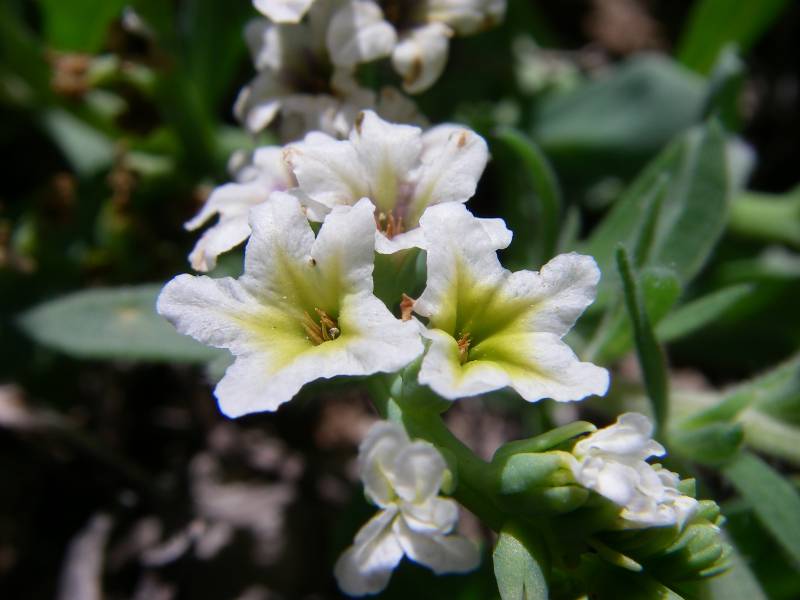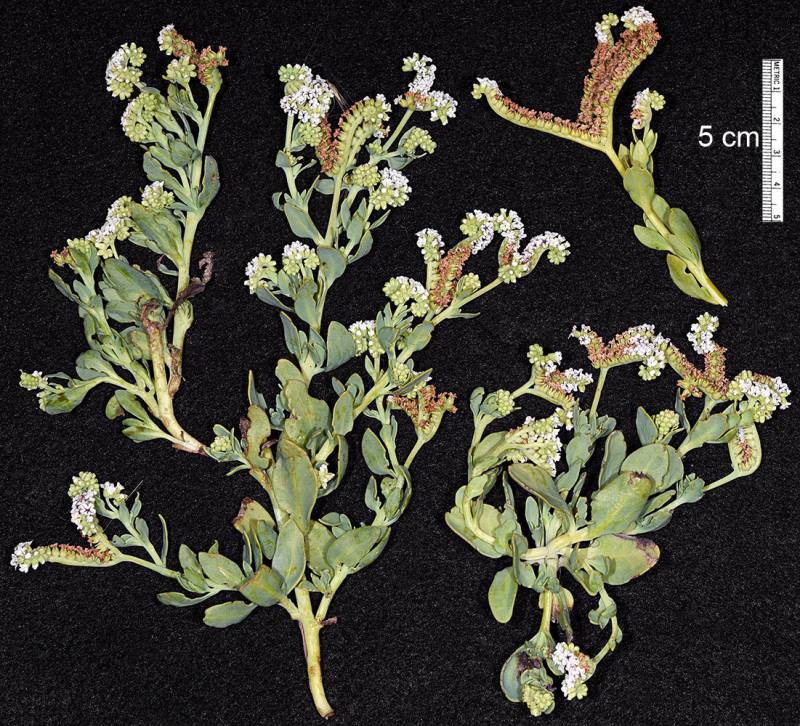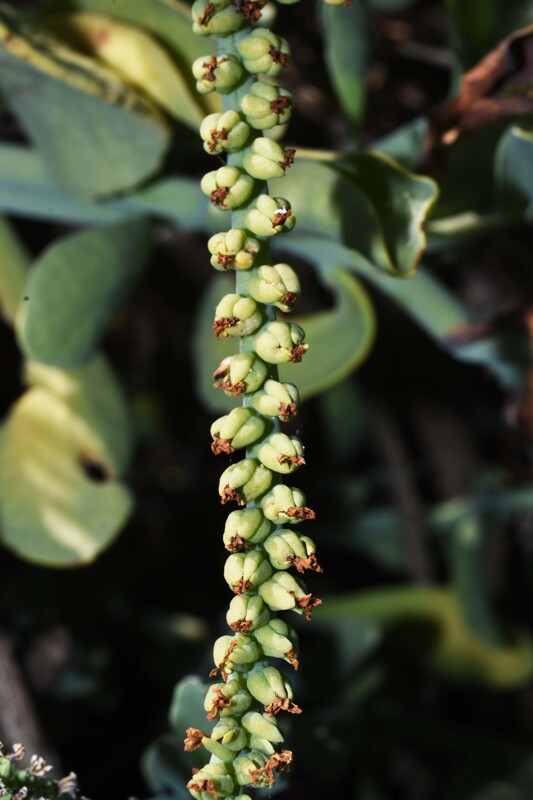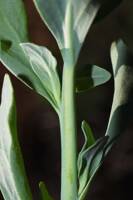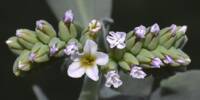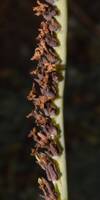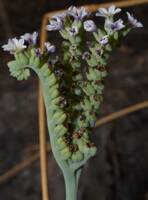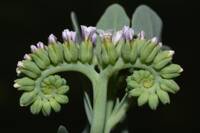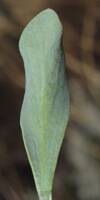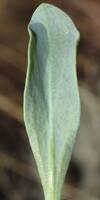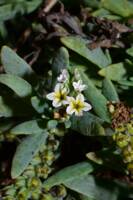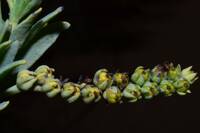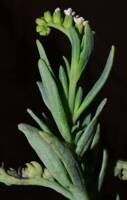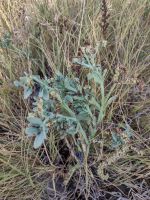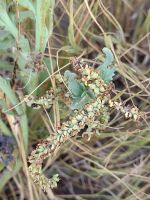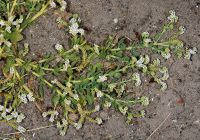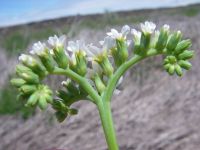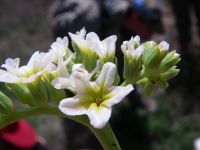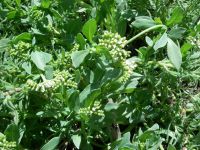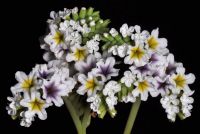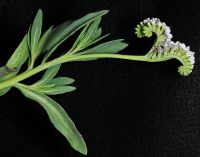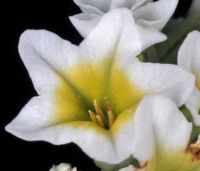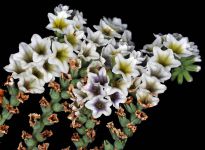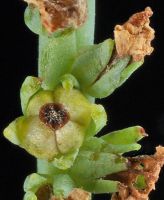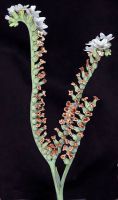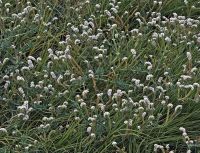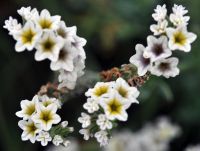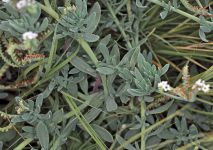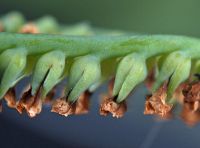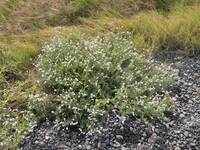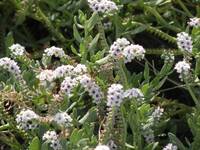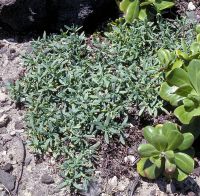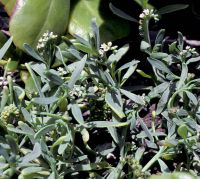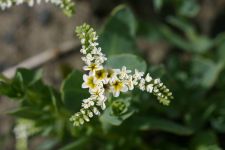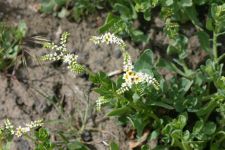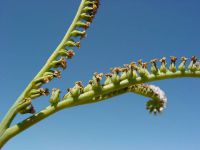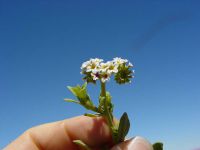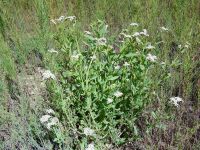Distribution: Occurring east of the Cascades crest in Washington; British Columbia to California, east across North America to the Atlantic Coast.
Habitat: Saline places at low elevations, often in the beds of dried ponds.
Flowers: June-September
Origin: Native
Growth Duration: Annual, Perennial
Conservation Status: Not of concern
Pollination: Bees, flies
Glabrous, succulent, taprooted annual or short-lived perennial, prostrate or ascending, the stems 1-6 dm. long.
Leaves all cauline, alternate, the lowermost reduced and scaly, the others oblanceolate and short-petiolate, 2-6 cm. long and 6-18 mm. wide.
Inflorescence of 1-several short, coiled, naked spikes at the end of a common peduncle, up to 6 cm. long at maturity; calyx 2-3 mm. long, the 5 lobes erect; corolla white or tinged with blue, 5-lobed, the limb 5-9 mm. wide, the tube slender; stigma sessile, disk-like, as broad as the ovary.
Nutlets 4, 1.5-2 mm. long, tardily separating.
Publication: Sp. Pl. 1: 130. 1753.
-
var. obovatum – salt heliotrope
 Occurring east of the Cascades crest in Washington; British Columbia to California, east across North America to the Atlantic Coast.
Occurring east of the Cascades crest in Washington; British Columbia to California, east across North America to the Atlantic Coast.
PNW Herbaria: Specimen records of Heliotropium curassavicum in the Consortium of Pacific Northwest Herbaria database
WA Flora Checklist: Heliotropium curassavicum checklist entry
OregonFlora: Heliotropium curassavicum information
E-Flora BC: Heliotropium curassavicum atlas page
CalPhotos: Heliotropium curassavicum photos

